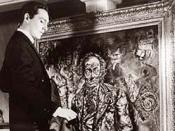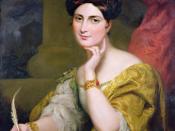The Victorian period of English culture was a time of radical changes within society, as the concept of the individual began to develop, and dominant ways of thinking challenged. The social structure began to undergo changes, as women began to gain greater influence in a patriarchal society. The individual pursuit of happiness gradually began to overcome the desire to act is a moral fashion. These shifts in the social paradigm and subversions of social expectations are evidenced in Robert BrowningÃÂs Last Duchess and The Bishop Orders his Tomb at St. PraxedÃÂs Church, English Laws for Women in the Nineteenth Century by Caroline Norton and Oscar WildeÃÂs A Picture of Dorian Gray.
The role of women within the Victorian era constituted a submissive and oppressed one. The attitude of the patriarchal society of women is demonstrated and satirized in BrowningÃÂs My Last Duchess. The dominant position of the Duke is made apparent through his commanding tone ÃÂwillÃÂt you sit and lookÃÂ as the Duchess as shown merely in the role of an object ÃÂI call that piece a wonderÃÂ.
Through the DukeÃÂs conversational tone ÃÂ(since none puts by the curtain I have drawn for you, but I)àBrowning expresses his complete dominance. The use of iambic pentameter reinforces the DukeÃÂs control over the situation. This dominant relationship is typical of the position women experienced during the Victorian era. Short punctuated sentences reflect the petty nature of the DukeÃÂs grievance ÃÂToo easily impressed; she liked whateÃÂer she looked on,àreinforcing the persecution of women. As the Duchess attempts to subvert the position her society places her in, and seek individual satisfaction ÃÂher looks went everywhereàshe is punished by society ÃÂthen all smiles stopped together.àThrough the DukeÃÂs naïve tone, Browning employs this character as a symbol, in order to represent...

![[Portrait of Abe Most, Pete Ponti, Sid Jacobs, and Jimmy Norton, Hickory House, New York, N.Y., ca. June 1947] (LOC)](https://s.writework.com/uploads/9/94582/portrait-abe-most-pete-ponti-sid-jacobs-and-jimmy-norton-hi-thumb.jpg)
